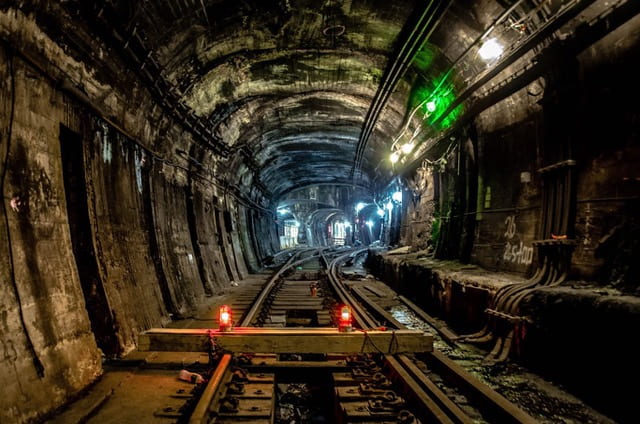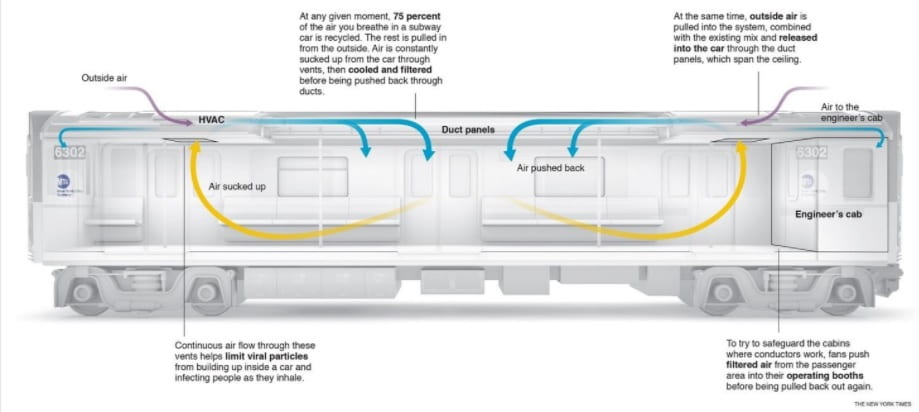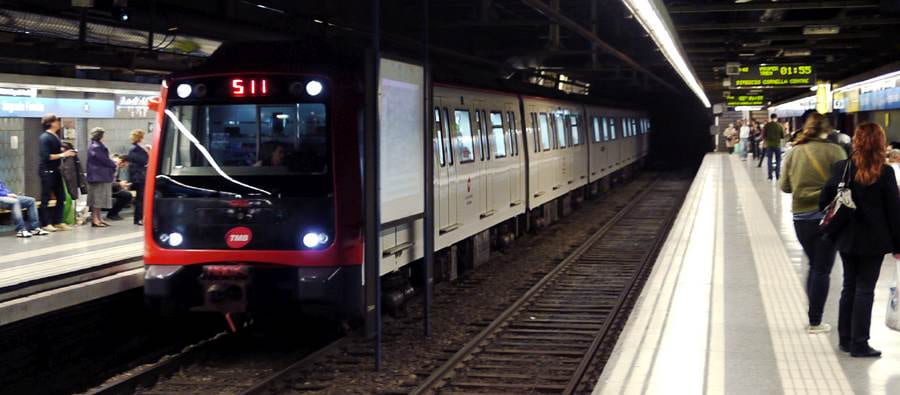
Jordin Sparks asks “how I’m supposed to breathe with no air” – I assume she, of course, is not talking about air quality in underground subway stations. But the question remains the same. As we come to the first anniversary of the COVID-19 pandemic, planners must critically think about how riders interact with space both on and off their modes of transit. In a recently published study from NYU Langone, researchers found that New York City subway stations contained 2 to 7 times the amount of hazardous materials and organic particles as outside air samples. This research was conducted before the pandemic hit the City, so the effects of low ridership, as well as more thorough station cleaning, are unknown. However, the pandemic has shed light to the issues of air quality on public transit – this study is evidence that we need to examine both the horse and the rider, the station, and the train.
On the subway itself, there has been much research done on air quality, and especially in the past year. In August, The New York Times published an article with animations about how airflow works on a subway car. Published to help the public better understand how trains pull and recycle clean air onto their cars in the time of COVID; the animations give a detailed breakdown of how most airborne particles will be filtered out within 30 seconds. As well, a study done by NYU (shoutouts to the Wagner students and professors) explain that there is not a sizable connection between the use of public transit and deaths related to the seasonal flu. It would make sense that subway cars need strong filtration systems, as they spend the majority of their time in tunnels with a limited air supply.Airflow is not just important within the subway car; it is both important for MTA workers and passengers on and off the trains.
 Image 2: Air Circulation in a MTA Subway Car (New York Times)
Image 2: Air Circulation in a MTA Subway Car (New York Times)
Talking about air is a reminder that our transit is best when it is safe for everyone, both the riders and those who operate and maintain the system. As both the pandemic and past studies have shown, being underground for extended periods of time without proper airflow and air quality can lead to disease. Studies have shown that longer (usually 15 minutes or more) exposure in areas with higher airborne particles and metals can lead to heart and lung disease, even death. Where do these particles come from? Well, in a number of ways. The two most common being the combustion of debris on tracks and the friction created by breaking steel wheels on metal tracks – both of which create particulate pollution. This pollution trapped underground alongside airborne diseases – from the seasonal flu to COVID – creates an unsafe environment for passengers and an inhospitable workplace for MTA employees. Planners must find solutions to the airflow conundrum.
 Image 3: Barcelona Metro Station (Barcelona Metro)
Image 3: Barcelona Metro Station (Barcelona Metro)
Good news: we have found some! The most exciting results have come out of Barcelona where the IMPROVE Life Project has studied particulate pollution within their subway stations and cars to best determine how to get proper airflow. Because each of their stations are so different (different depths, access to fresh air, overground terrarium, and buildings blocking air access), they have had to come up with unique solutions per station to lower pollution levels. In Seoul, every station is monitored for its air pollution levels and data is shared with the public, so they can best determine when to go to the train station. Other solutions have been proposed, such as floor-to-ceiling platform screen doors to keep the pollutants out of the stations and within the tunnels, and wearing a mask can help prevent the particles from entering one’s lungs. From big infrastructure to everyday changes, there is a way to keep everyone safe on board.
There are solutions to this issue and they must be addressed. One of the many benefits of public transit is to provide an environmentally friendly and safe option for mass movement. It must also be safe to use and addressing air quality issues is crucial. We can’t breathe without air. Simple as that. So let’s get to work and get cleaning!
Cover Image Source: NYC Subway Tunnel (Source: The Village Voice)